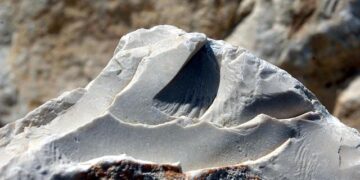Saturn’s largest moon, Titan, long a focus of astrobiological intrigue, may harbor an alien biosphere-but not quite as we might imagine. Recent research suggests that potential life forms on Titan could be surprisingly compact, roughly the size of a small dog. This unexpected possibility challenges our Earth-centric assumptions about life’s scale and complexity beyond our planet, opening new avenues for the search for extraterrestrial organisms in one of the Solar System’s most enigmatic worlds.
Titan’s Alien Biosphere Could Host Life Forms Comparable in Size to Dogs
Recent studies into Titan’s thick, orange-hued atmosphere and its vast liquid hydrocarbon lakes suggest the moon could harbor life forms far larger than previously imagined. Unlike Earth’s microscopic microbes, these hypothetical organisms might reach sizes comparable to dogs, thriving in a biosphere governed by methane and ethane rather than water. The low temperatures and unique chemical environment create conditions for biochemistry that’s fundamentally different from terrestrial life, potentially giving rise to exotic ecosystems rich in unfamiliar biological structures.
Scientists propose that Titan’s gravity, temperature, and chemical makeup could support life exhibiting remarkable adaptations, such as dense organic membranes and slow metabolic processes. Key characteristics of this speculative biosphere have been summarized below:
- Size Range: Up to 1 meter (similar to a medium-sized dog)
- Energy Source: Chemical reactions involving hydrocarbons
- Movement: Slow, buoyant adaptations for swimming through liquid methane lakes
- Reproduction: Possibly based on complex organic cycles rather than DNA
| Feature | Earth Analogue | Titan Hypothesis |
|---|---|---|
| Size | Microbe to small animals | Dog-sized creatures |
| Medium | Water | Liquid methane/ethane |
| Metabolism Speed | Fast | Slow & chemical-dependent |
Exploring the Implications of Medium-Sized Extraterrestrial Organisms on Titan
Recent studies suggest that Titan’s dense atmosphere and rich organic chemistry might support life forms larger than previously imagined, potentially reaching the size of a small dog. Unlike the microscopic extremophiles often hypothesized to inhabit otherworldly environments, medium-sized organisms on Titan could exploit the moon’s liquid methane and ethane lakes as habitats, developing biological structures adapted to cryogenic temperatures. This raises questions about how such creatures might manage biological functions like movement, reproduction, and energy conversion in an alien biosphere vastly different from Earth’s.
- Metabolic processes could rely on the moon’s hydrocarbon-rich environment rather than water-based chemistry.
- Locomotion might involve slow, deliberate movements through viscous liquid methane pools.
- Structural adaptations could include antifreeze-like compounds to prevent bodily fluids from freezing.
| Characteristic | Possible Adaptation | Titan Context |
|---|---|---|
| Size | Medium, dog-sized | Supported by Titan’s low gravity |
| Respiration | Methane-based metabolism | Utilizes atmospheric hydrocarbons |
| Mobility | Slow, adapted for viscous liquids | Sure! It looks like your table is incomplete. Here’s a possible completion for the last row of your table based on the context you provided about mobility: |
| Mobility | Slow, adapted for viscous liquids | Optimized for movement through dense methane/ethane lakes |
| Characteristic | Possible Adaptation | Titan Context |
|---|---|---|
| Size | Medium, dog-sized | Supported by Titan’s low gravity |
| Respiration | Methane-based metabolism | Utilizes atmospheric hydrocarbons |
| Mobility | Slow, adapted for viscous liquids | Optimized for movement through dense methane/ethane lakes |
Let me know if you want me to add more characteristics or expand on any of these!
Scientific Recommendations for Future Missions Targeting Titan’s Potential Biosphere
Future expeditions to Titan must prioritize the development of specialized instruments capable of detecting life forms adapted to the moon’s unique cryogenic environment. Scientists emphasize the need for highly sensitive biosignature analyzers that go beyond traditional Earth-centric life detection methods, focusing instead on potential exotic chemistries. These instruments should be designed to analyze complex organic aerosols, methane lakes, and subsurface ocean samples, paying close attention to unusual isotopic ratios and molecular patterns indicative of metabolism. Robotic explorers may also benefit from enhanced mobility systems that can navigate Titan’s dense atmosphere and viscous hydrocarbon seas, enabling comprehensive surveys spanning both terrestrial and aquatic habitats.
Prioritizing small to medium-sized autonomous vehicles aligned with the hypothesis of dog-sized lifeforms could maximize mission efficiency. This strategic size range is anticipated to balance between detailed local exploration and broader environmental data collection. To illustrate key mission objectives, researchers propose the following focus areas:
- Surface and Subsurface Sampling: Targeting organic-rich sediments and ice-water interfaces.
- Atmospheric Analysis: Real-time monitoring of methane and nitrogen cycles.
- Energy Source Identification: Exploring potential chemical gradients fueling biological activity.
| Mission Component | Primary Goal | Technology Example |
|---|---|---|
| Rover Exploration | Sample diverse terrains | Adaptive wheels with hydrocarbon resistance |
| Submarine Probe | Explore methane lakes | Sonar-based mapping and organic detection |
| Atmospheric Drone | Monitor weather and gas composition | Miniaturized mass spectrometers |
Future Outlook
As investigations into Titan’s mysterious environment continue, the possibility of an alien biosphere-potentially inhabited by dog-sized organisms-adds an intriguing new chapter to our search for life beyond Earth. While definitive evidence remains elusive, these findings underscore the moon’s potential as one of the solar system’s most promising sites for astrobiological research. Future missions and studies will be crucial in unraveling the secrets beneath Titan’s hazy atmosphere, bringing us one step closer to answering the timeless question: Are we alone in the universe?





















![Forest ecology cannot be reduced to arithmetic, says M.I. Varghese [Interview] – Mongabay-India](https://earth-news.info/wp-content/uploads/2025/12/328946-forest-ecology-cannot-be-reduced-to-arithmetic-says-mi-varghese-interview-mongabay-india-120x86.jpg)









